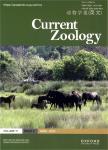版权所有:内蒙古大学图书馆 技术提供:维普资讯• 智图
内蒙古自治区呼和浩特市赛罕区大学西街235号 邮编: 010021

作者机构:Research Group of Ecology and Behavioral Biology Institute of Biology University of Siegen Adolf-Reichwein- StraBe 2 Siegen 57068 Germany Institute of Real-Time Learning Systems Department of ElectricalEngineering & Computer Science University of Siegen HSIderlinstraBe 3 Siegen 57076 Germany
出 版 物:《Current Zoology》 (动物学报(英文版))
年 卷 期:2017年第63卷第1期
页 面:65-74页
核心收录:
学科分类:0710[理学-生物学] 07[理学] 09[农学]
基 金:funded by the Deutsche Forschungsgemeinschaft (DFG) with a grant to S.G. and K.W funded by the Deutsche Forschungsgemeinschaft (DFG) with a grant to K.M., I.S., J.M.H., and K.D.K
主 题:computer animation, fish behavior, mate-choice experiment, validation, virtual fish model.
摘 要:The use of computer animation in behavioral research is a state-of-the-art method for designing andpresenting animated animals to live test animals. The major advantages of computer animations are:(1) the creation of animated animal stimuli with high variability of morphology and even behavior; (2)animated stimuli provide highly standardized, controlled and repeatable testing procedures; and (3)they allow a reduction in the number of live test animals regarding the 3Rs principle. But the use of ani-mated animals should be attended by a thorough validation for each test species to verify that behaviormeasured with live animals toward virtual animals can also be expected with natural stimuli. Here wepresent results on the validation of a custom-made simulation for animated 3D sailfin mollies Poecilialatipinna and show that responses of live test females were as strong to an animated fish as to a videoor a live male fish. Movement of an animated stimulus was important but female response was stron-ger toward a swimming 3D fish stimulus than to a "swimming" box. Moreover, male test fish wereable to discriminate between animated male and female stimuli; hence, rendering the animated 3D fisha useful tool in mate-choice experiments with sailfin mollies.